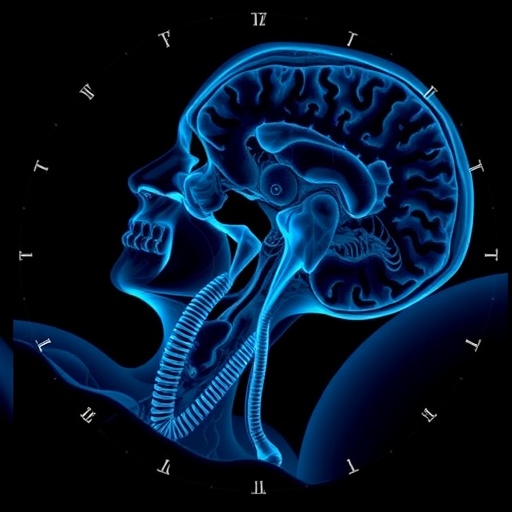ROCHESTER, Minn. — A groundbreaking development has emerged from Mayo Clinic researchers who have created an innovative artificial intelligence (AI) algorithm capable of detecting obstructive sleep apnea (OSA) through electrocardiogram (ECG) analysis. This remarkable advancement holds the potential to revolutionize the diagnostic process for OSA, making it significantly faster, less expensive, and more accessible, particularly for women who frequently remain undiagnosed despite a high prevalence of the condition.
Obstructive sleep apnea is a highly common yet underappreciated affliction that impacts more than 936 million adults worldwide, particularly those aged 30 to 69. This condition presents an array of cardiovascular risks that cannot be overlooked. Individuals suffering from OSA experience repeated interruptions in airflow during sleep due to upper airway blockage or collapse. These episodes result in shallow breathing or complete cessation of breath, often accompanied by loud snoring and gasping. Alarmingly, despite the wide reach of this disorder, it frequently goes without being diagnosed, placing individuals at risk for significant health complications.
Dr. Virend Somers, M.D., Ph.D., who serves as the Alice Sheets Marriott Professor of Cardiovascular Medicine and the senior author of the recent study published in JACC: Advances, elucidates the seriosity of the matter. Dr. Somers emphasizes that OSA not only presents an immediate health threat but also creates substantial cardiovascular challenges, to the extent that AI algorithms can effectively extract the distinctive markers of OSA from ECG data. This ECG data fundamentally represents the electrical activity of the heart’s muscle cells.
The prowess of the AI model was unveiled through an extensive analysis of over 11,000 ECG tests conducted at Mayo Clinic, all paired with comprehensive sleep evaluations. Of this cohort, more than 7,000 patients had already been diagnosed with OSA, while around 4,000 served as control subjects without the disorder. The research aimed to leverage cutting-edge AI algorithms to uncover correlations between the ECG readings and OSA, providing powerful insights to medical professionals.
One of the most astonishing revelations from the study was the enhanced detection of OSA in the female participants compared to their male counterparts, despite the lower severity of the condition in women. Dr. Somers remarked on this unexpected finding, stressing its significance in light of emerging literature that indicates women who suffer from OSA may experience more pronounced cardiovascular repercussions, even when their sleep apnea presents as less severe by standard diagnostic standards.
This discrepancy raises critical questions regarding the current understanding of OSA and its effects on different demographics. The findings suggest that although women may present with milder OSA symptoms, the potential damage to their heart muscle cells could be more substantial than previously assumed. Dr. Somers points out the need for a reassessment of how OSA is diagnosed and treated, particularly among women, to mitigate the pressing cardiovascular risks associated with the disorder.
Moreover, the research team underscored that the implications of their AI-driven approach extend beyond mere diagnosis. Analysis using this developed model has the capability to evaluate how various OSA treatments influence a patient’s cardiovascular risk, which is a crucial factor that can drastically change patient outcomes and overall quality of life. By understanding the relationship between OSA treatments and cardiovascular health, clinicians can make more informed decisions tailored to each patient’s needs.
With significant strides being made in the realm of AI-assisted medical diagnostics, the future for those affected by sleep apnea appears promising. The development of the AI algorithm at Mayo Clinic represents a landmark achievement that could alter the landscape of sleep medicine. As OSA remains commonly misrecognized or underestimated, this technology can provide a critical tool in identifying those at risk more reliably and efficiently.
The implications of these findings stretch far and wide, potentially leading to national campaigns aimed at raising awareness about OSA and its widespread impacts. There is a clear and urgent need to address the underdiagnosis of women and to ensure that effective screening measures are put in place to capture the true prevalence of this disorder in all affected populations.
This technology’s emergence at Mayo Clinic is just the start of a transformative journey in biomedical research and cardiology, setting the stage for further studies that could bolster understanding of OSA while promoting a more robust, health-centric approach to treatment regimens inspired by comprehensive and precise data analytics.
In conclusion, the innovative AI algorithm developed at the Mayo Clinic is equipped to illuminate the less understood dynamics of obstructive sleep apnea, offering both a diagnostic breakthrough and a beacon of hope for millions worldwide. As this technology evolves, the potential to personalize and improve treatment strategies for OSA will revolutionize patient care, ensuring that underlying cardiovascular risks are identified and managed effectively.
Subject of Research: AI algorithm for detection of obstructive sleep apnea using ECG
Article Title: Deep Neural Network Algorithm Using the Electrocardiogram for Detection of Obstructive Sleep Apnea
News Publication Date: 16-Sep-2025
Web References: (Links to sources not provided in this context)
References: (Further references not provided in this context)
Image Credits: (Image credits not provided in this context)
Keywords
Obstructive sleep apnea, artificial intelligence, electrocardiogram, cardiovascular health, women’s health, Mayo Clinic, medical research, AI algorithms, diagnostics.




